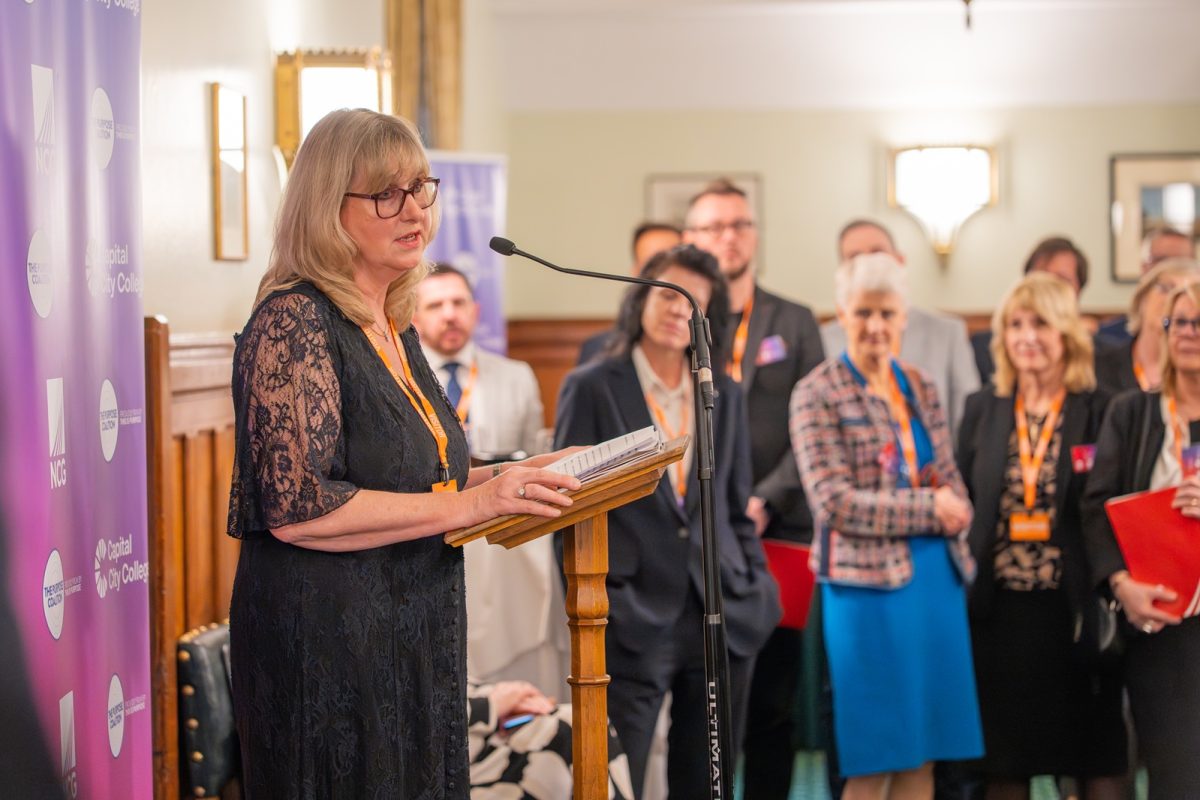Disabled people are more likely to be self-employed than non-disabled people #DisabilityAwareness
Employment among people with disabilities rising but more progress needed
New figures from the Office for National Statistics (ONS) show that the gap in employment between working-age people with and without disabilities is closing.
In 2013, 43.4% of working-age disabled people were employed, compared with 77.6% of non-disabled people representing a gap of 34.2%. By 2019 however the gap fell to 28.6% with 53.2% of working-age disabled people in employment, compared to 81.8% of non-disabled people.
Unemployment among people with disabilities has roughly halved over this period, however it is still double the unemployment rate among people without disabilities. The announcement comes ahead of the #IDPWD International Day of People with Disabilities on 3 December.
Tom Hadley, Director of Policy at the Recruitment and Employment Confederation said:
“The employment gap falling over the last six years is good news. It shows that employers are moving from good intentions to making a tangible difference on the disability and wider inclusion agenda.
“There is still a lot more work needed, and ample opportunity, to close the gap further. Initiatives like the Recruitment Industry Disability Initiative (RIDI) and the REC’s Good Recruitment Campaign, supported by nearly 500 businesses, are leading the way in breaking down the barriers that people with disabilities face entering and thriving in the world of work.
“Showing businesses practical examples of what works to encourage inclusive recruitment is the right way forward. Recruitment professionals have a pivotal role to play here. 90% of businesses say that what they are looking for from an external recruitment provider is access to expertise”.
Disability pay gaps in the UK: In 2018 nearly one in five of the UK population aged 16 to 64 years was disabled.
Using the Government Statistical Service (GSS) harmonised definition of disability, 18.9% of people aged 16 to 64 years were disabled in 2018. Women were more likely to be disabled than men, at 21.1% and 16.6%, respectively.
As might be expected, the prevalence of disability increased as people get older. In 2018, people aged 60 to 64 years were almost three times more likely to be disabled, at 31.4%, than people aged 16 to 19 years, of whom 11.9% were disabled.
Half of disabled people aged 16 to 64 years were employed
In 2018, of disabled people aged 16 to 64 years, 50.9% were in employment, whilst 80.7% of non-disabled people were in employment.
Employment rates for disabled men and women were similar at 51.7% and 50.4%. However, the disability employment gap was wider for men, largely driven by higher employment rates for non-disabled men compared with non-disabled women.
Disabled people were more likely to be self-employed than non-disabled people, at 15.2% and 13.9% respectively. This has remained relatively constant since 2014.
Disabled people were more likely to be economically inactive(44.3%) than non-disabled people (16.3%). Of disabled people who were inactive, 57.2% said that their disability was the reason why they were inactive. The most common reason for inactivity given by non-disabled people was because they were students, at 39.1%. Other main reasons for being inactive for both disabled and non-disabled people were that they were either retired or looking after their family or home.
Of disabled people with a mental impairment, 53.3% were economically inactive in 2018. This was the highest out of the three categories of impairment, while physical impairment was the lowest, at 38.7% economically inactive, and other impairments were at 46.2%.
The pay gap is largest for managers, directors and senior officials
Across the occupation groups, the widest pay gap of 13.1% was seen for managers, directors and senior officials. The remaining occupation groups have disability pay gaps in the range of 1 to 5%.
Managerial occupations are split between high skilled and upper middle skilled. In 2018, disabled people in a managerial occupation were more likely than non-disabled people to be employed in the upper middle skilled occupations rather than high skilled occupations.
Recent analysis of the latest Annual Survey of Hours and Earnings (ASHE) data show that occupations classed as high skilled are paid more than those classed as upper middle. Some examples of high skilled occupations within this group would be a finance director or senior police officer, whilst upper-middle skilled occupations would include shopkeepers and (wholesale and retail) proprietors or property, housing and estate managers. We are unable to make this comparison for other occupation groups as all occupations within them are classified to the same skill level.
The narrowest pay gaps were seen in the low and lower-middle skill occupation groups such as elementary or caring, leisure and other service occupations. We have already seen that these groups were where disabled employees were more likely to be employed than non-disabled employees.
Looking at the median pay values these narrowest pay gaps were likely to be influenced by the National Living Wage, which for the financial year (April to March) ending 2019 was £7.83 (for those aged 25 years and over).
Given the lower levels of median pay in these occupation groups, the National Living Wage should provide a legal lower bound for hourly pay. This would compress the distribution of pay for disabled and non-disabled employees alike, reducing the scope for pay to diverge in comparison with higher-paid occupation groups. Previous analysis of the Labour Force Survey by the ONS showed that there was a greater density of disabled employees immediately around the National Living Wage, compared with non-disabled employees.
Presents statistics on earnings and employment for disabled and non-disabled people in the UK. We present raw disability pay gaps for the UK and also use regression analysis to provide more insight into the factors which affect pay for disabled people.
Documents
Disability pay gaps in the UK: 2018
Details
Official statistics are produced impartially and free from political influence.
Earnings and employment for disabled and non-disabled people in the UK, raw disability pay gaps and factors that affect pay for disabled people.
Data
-
Regression outputs: disability pay gaps
The model coefficiants for the adjusted pay gap and Blinder-Oaxaca decomposition outputs, UK, 2018.
-
Raw pay gaps by disability
Raw pay gaps and median pay by disability and other personal characteristics, UK, 2018.
-
Prevalence and employment
Prevalence and employment estimates for disabled and non-disabled people by different personal characteristics, UK, 2018.











Responses